There can be your advertisement
300x150
Top 5 Most Creative Bus Stops in the World
Sharing the most unusual public architecture we've ever seen
What does an average bus stop look like? A canopy, a bench, and in the best-case scenario — a snack kiosk. But that's Russia, and in other countries, people approach common transport waiting areas with more creativity.
We tell you about the most unusual bus stops in the world.
NCTU (Sinchu, Taiwan)This stop attracts students from the largest university in Taiwan, Chiao Tung. There are no traditional seats here — instead, there are boards placed at various heights, allowing passengers to wait either sitting or lying down. The green roof is also open for walks and relaxation, and a rattan hammock hanging from it lets you enjoy sports events and have casual conversations in nature.
 Photo © Ivan Chuang
Photo © Ivan Chuang Photo © Ivan Chuang
Photo © Ivan Chuang Photo © Ivan Chuang
Photo © Ivan Chuang Photo © Ivan Chuang
Photo © Ivan Chuang Photo © Ivan ChuangStation of Being (Umeå, Sweden)
Photo © Ivan ChuangStation of Being (Umeå, Sweden)The Swedish interactive bus stop Station of Being features unusual standing spots where passengers can comfortably wait. Additionally, a special sound and light system alerts passengers when the bus is approaching. Just a few weeks after its opening, foot traffic increased by 35%, which seems quite justified.
 Photo © Samuel Pettersson
Photo © Samuel Pettersson Photo © Samuel PetterssonBUS:Stop (Krumbach, Austria)
Photo © Samuel PetterssonBUS:Stop (Krumbach, Austria)This bus stop project in the Austrian town of Krumbach was designed by Japanese studio Sou Fujimoto. Visually, it resembles a forest due to steel rods that fix a spiral staircase. Designer Fujimoto explained that the unusual concept was meant to give passengers the opportunity to communicate in a cozy setting amidst urban attractions. Thus, the stop was also envisioned as an unforgettable gathering place, as climbing up the stairs offers a panoramic view of the village.
 Photo © Hufton + Crow
Photo © Hufton + Crow Photo © Hufton + Crow
Photo © Hufton + Crow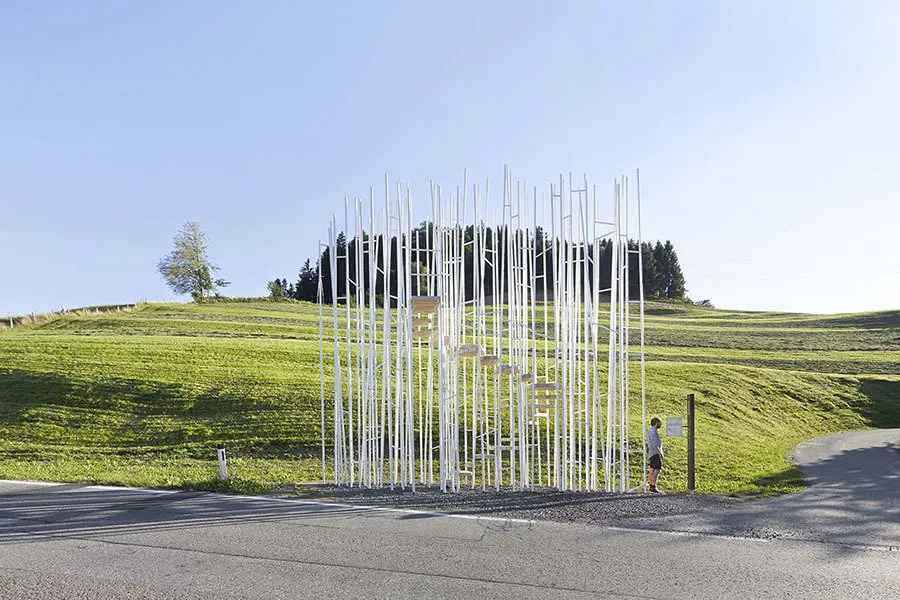 Photo © Hufton + Crow
Photo © Hufton + Crow Photo © Hufton + CrowZOB Esslingen (Esslingen, Germany)
Photo © Hufton + CrowZOB Esslingen (Esslingen, Germany)This stop was designed by German architect Werner Sobek, who won the competition to redevelop the bus station in Esslingen. The curved roof highlights the natural landscape, and glass panels create comfortable conditions for passengers under shelter. Even in summer, it’s not hot under such a canopy.
 Photo © Zooey Braun
Photo © Zooey Braun Photo © Zooey Braun
Photo © Zooey Braun Photo © Zooey Braun
Photo © Zooey Braun Photo © Zooey BraunMaxwan (Rotterdam, Netherlands)
Photo © Zooey BraunMaxwan (Rotterdam, Netherlands)The Dutch studio Maxwan designed three bus stops in Rotterdam with concave and convex roofs. The steel roof, only 9.5 mm thick, is the thinnest in the world. The pastel pink canopy is designed for about 40 people. The central roof curves upward, while the side roofs curve downward. Visually, this installation somewhat resembles a fabric swaying in the wind, although each canopy weighs five tons.
 Photo © Filip Dujardin
Photo © Filip Dujardin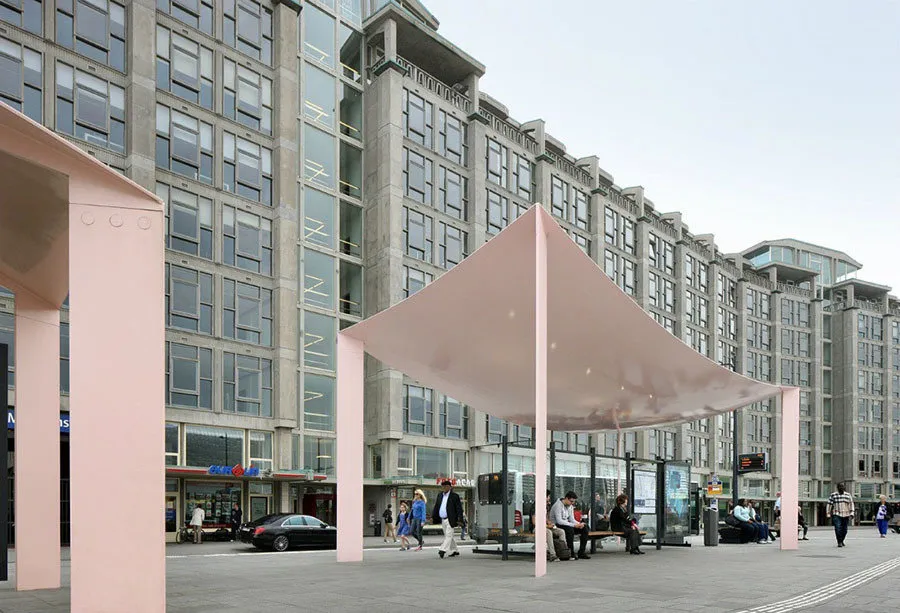 Photo © Filip Dujardin
Photo © Filip Dujardin Photo © Filip Dujardin
Photo © Filip Dujardin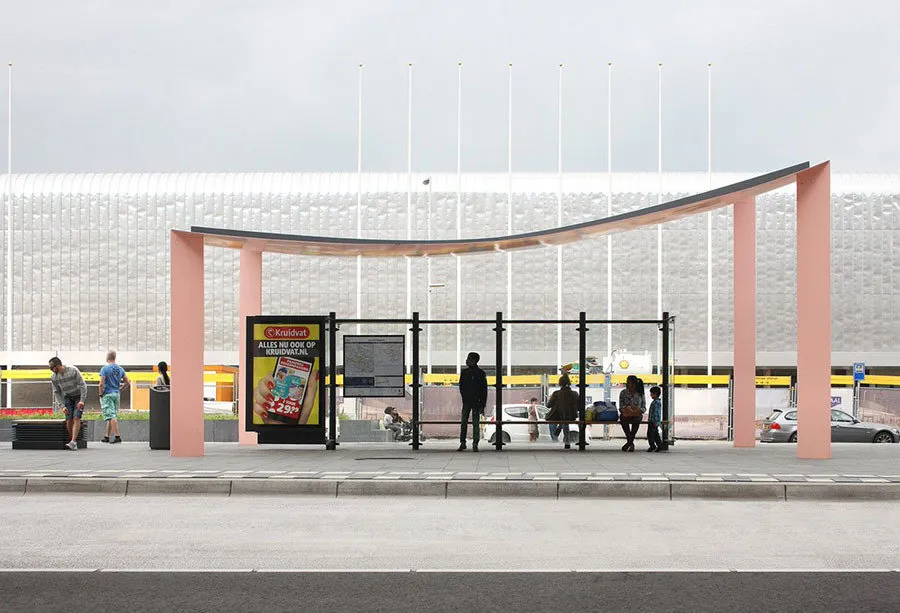
 Photo © Filip Dujardin
Photo © Filip DujardinMore articles:
 8 Important Garden Tasks: Plan Them for the Next Weekend
8 Important Garden Tasks: Plan Them for the Next Weekend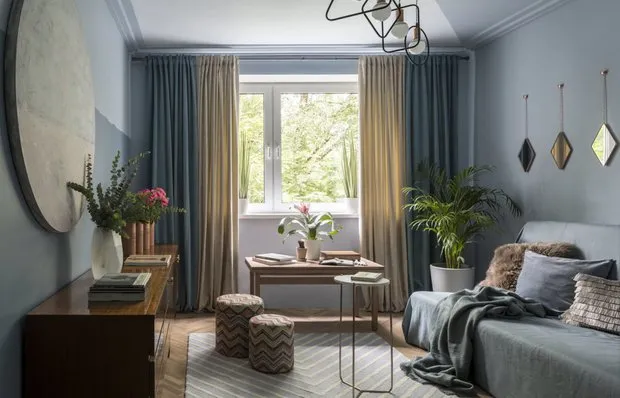 Tulle, Carpet and Other USSR Items That Fit Into Modern Interior
Tulle, Carpet and Other USSR Items That Fit Into Modern Interior Repair in New Construction: Most Common Mistakes and Unnecessary Expenses
Repair in New Construction: Most Common Mistakes and Unnecessary Expenses 12 Cool Kitchen Gadgets from AliExpress Under 1,300 Rubles
12 Cool Kitchen Gadgets from AliExpress Under 1,300 Rubles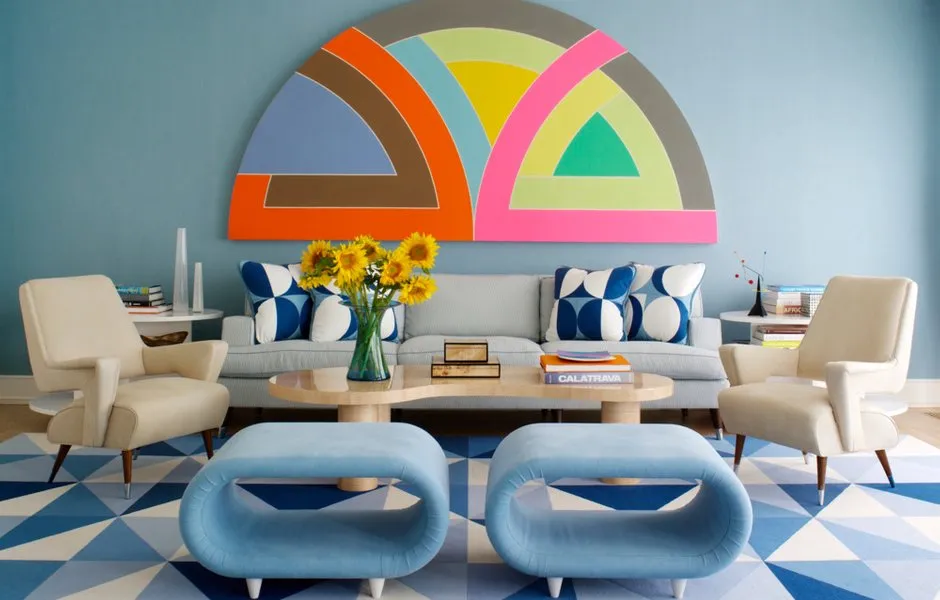 Unveiling 4 Key Composition Techniques in Interior Design
Unveiling 4 Key Composition Techniques in Interior Design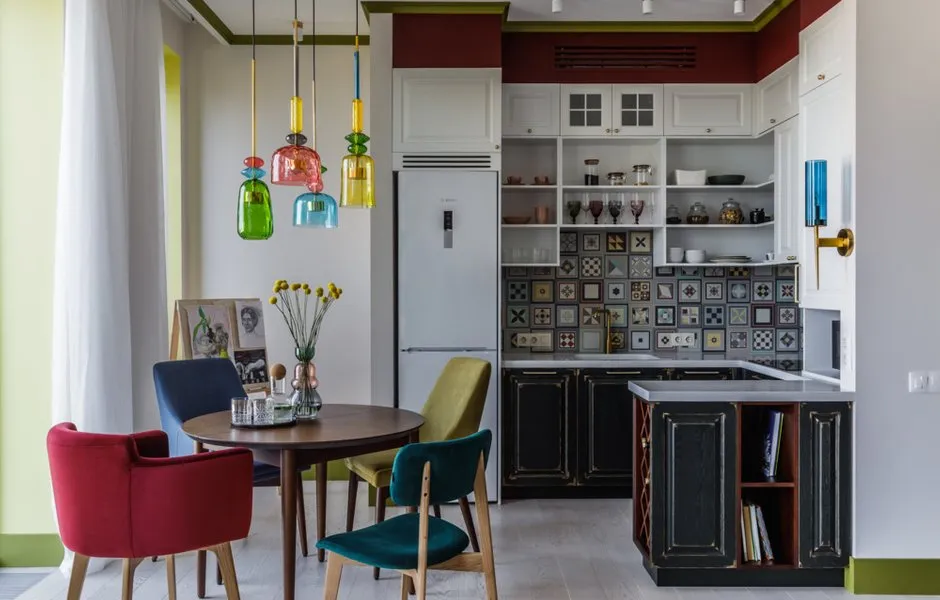 5 life hacks for choosing interior colors and not regretting it
5 life hacks for choosing interior colors and not regretting it 5 Things That Will Bring New Life to Your Interior (Spoiler: Different Chairs)
5 Things That Will Bring New Life to Your Interior (Spoiler: Different Chairs) 7 Tips to Make Your Entryway Look More Expensive
7 Tips to Make Your Entryway Look More Expensive